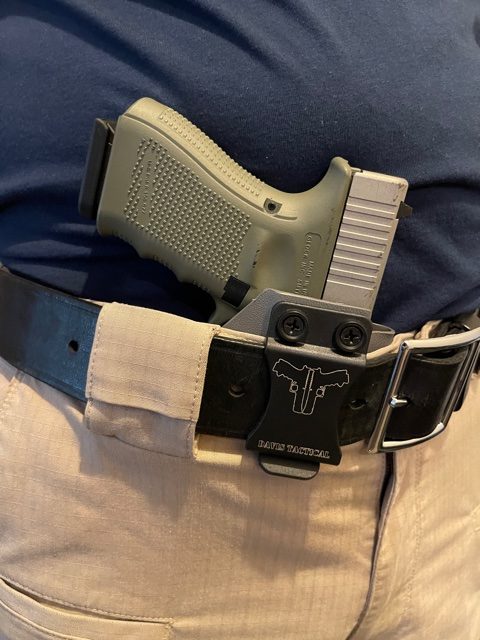In this guide, we will look at the most important things to consider when buying a conceal carry holster.
Conceal Carrying your gun the right way can be a challenge. Not all holsters are made equally.
Lets talk about a few important things that can make or break your holster experience.
There are many factors we need to consider like gun size, holster size, your size, how we choose to conceal our guns and more.
In this article, I will talk about 4 most important things you need to consider when buying a concealed carry holster for you gun.
Comfort
Comfort is by far the most important thing to consider when buying a conceal carry holster. If your concealed carry holster is not comfortable, than you won't carry it long.
The reason we conceal carry is for the worst case scenario, that one moment we hope never comes, so if the holster is not comfortable, it becomes really easy for us (just to leave our conceal carry guns at home), rather than suffer the consequences of a bad conceal carry holster.
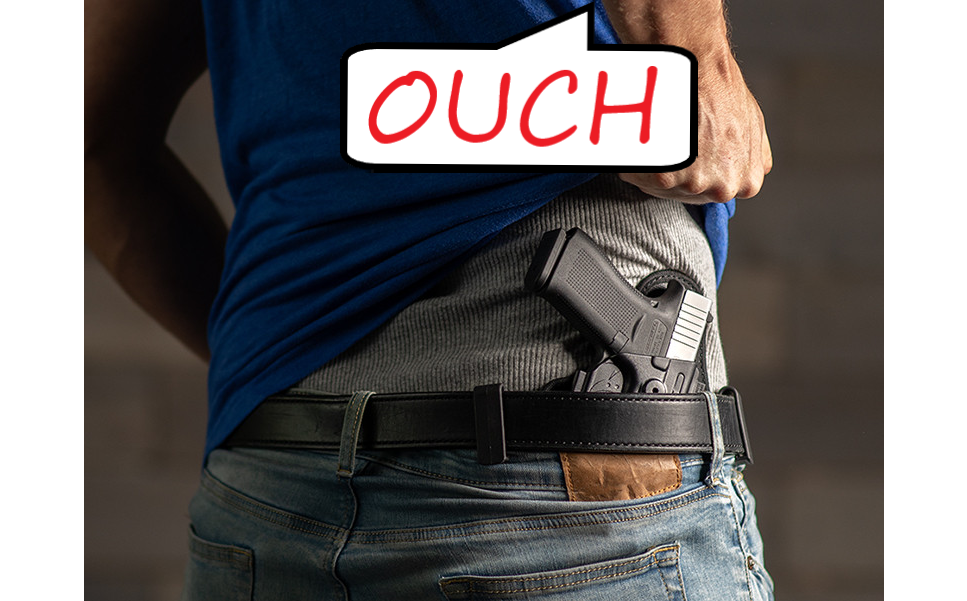
Don't Stop Looking! Finding a comfortable conceal carry holster for most of us can be a long trial and error process.
But, don't forget why we conceal carry guns! I've personally used many types of holsters with different shapes and sizes, made of different materials to find the right one for me.
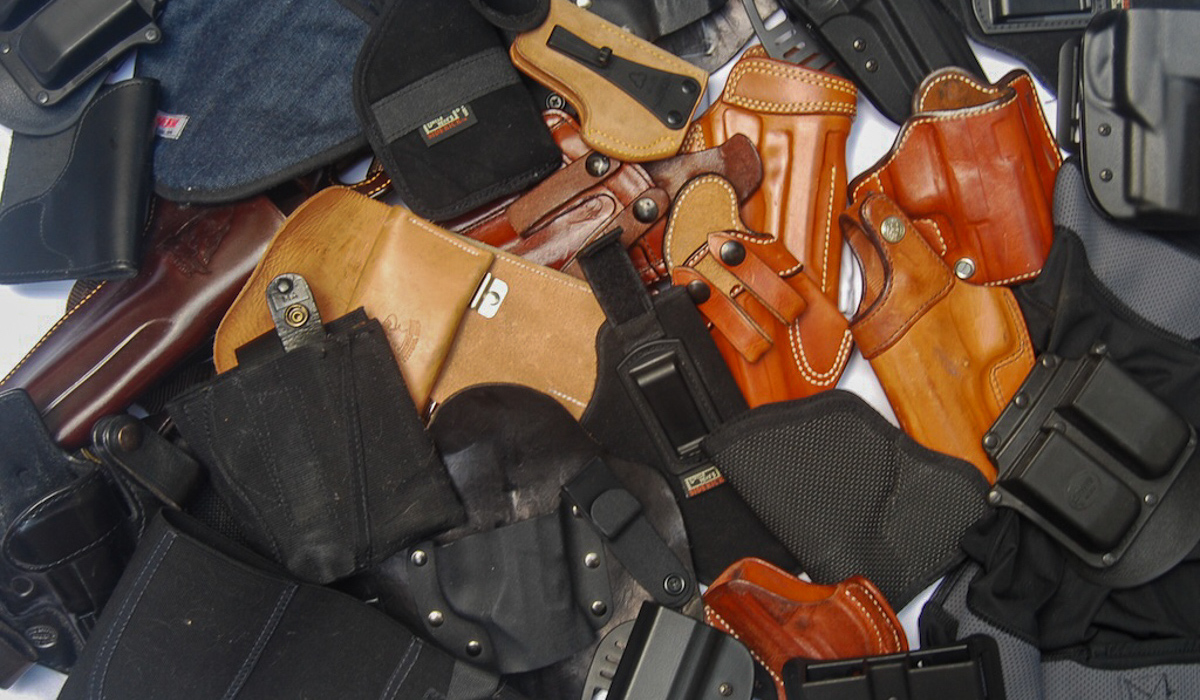
Holster Material
Holsters are made from several types of materials that can make a difference in our comfort levels.
The 4 most common types of holster materials are Kydex, Nylon, Neoprene, and Leather.
KYDEX | LEATHER | NYLON | NEOPRENE |
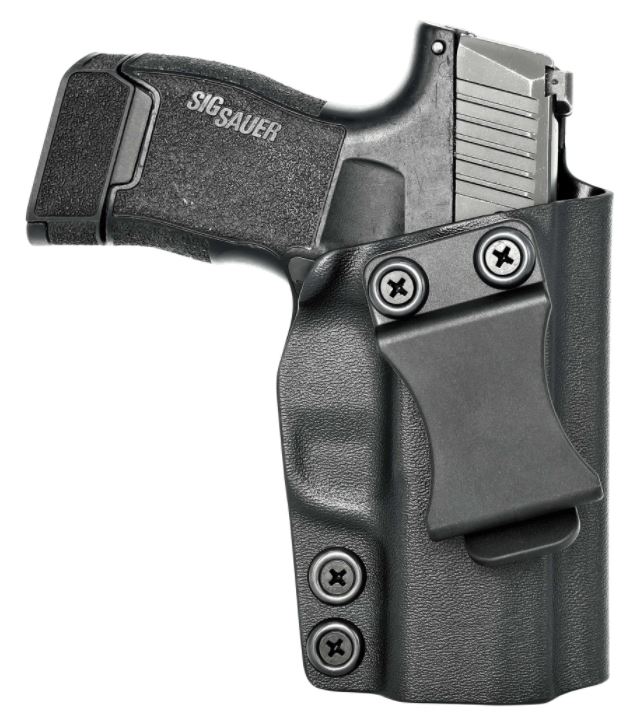 | 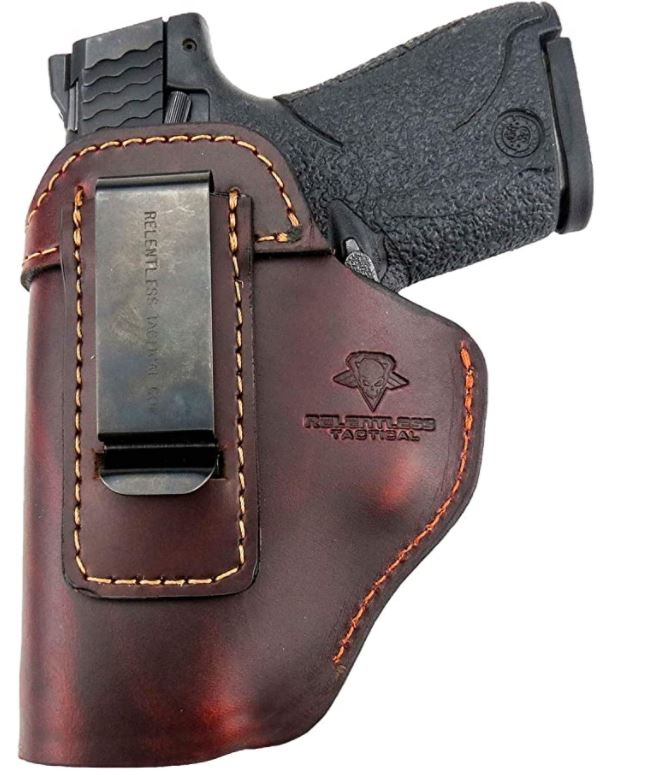 |  | 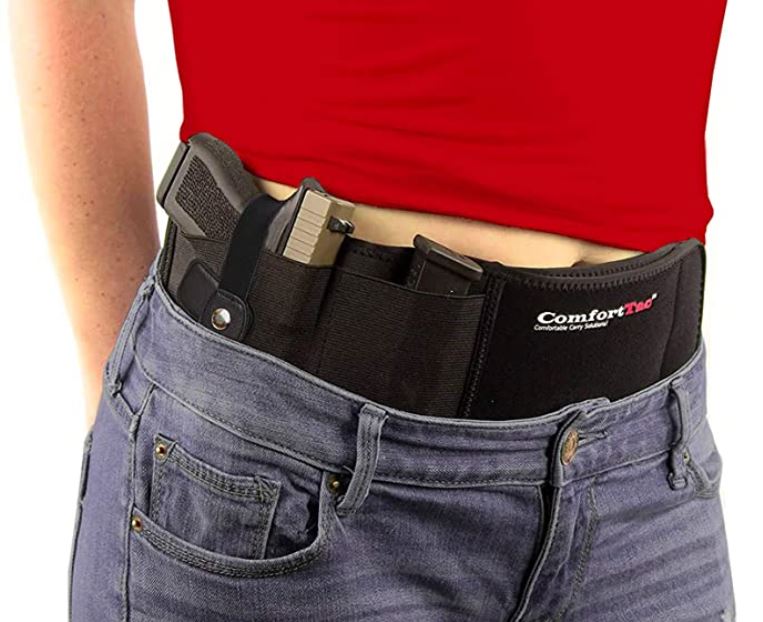 |
To learn more about each of the holster materials check out Top 4 Holster Materials by MYEDCHUB.
There is also Hybrid holsters, which are a combination of the two or more of materials.
Hybrid Holster
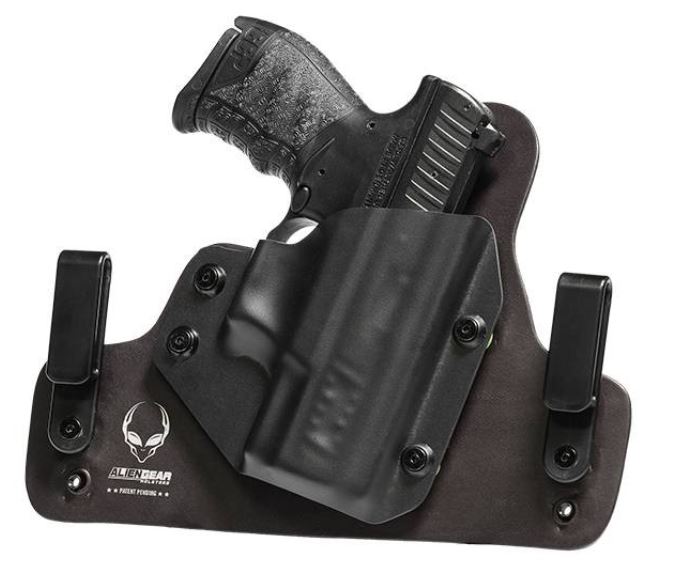
Soft vs Hard Material
Each materials is either soft, hard, or somewhere in the middle. For instance, Kydex holsters are typically the most rigged and can leave you bruised from digging.
However, buying a Kydex holster with rounded edges can help reduce discomfort from digging.
Leather and Neoprene are softer materials that won't leave you bruised, but unlike Kydex holsters, will have less retention, they collapse on draw, have no adjustability, and lack of custom designs.
Carry Method
We're going talk about the 2 most common conceal carry methods: outside waistband OWB and inside waistband IWB.
Most people find these 2 methods most effective for conceal carrying your gun.

If you want to find out about other conceal carry methods check out Types of Conceal Carrying Methods Guide [Top 5].
OWB is when the holster is attached to your belt on the outside of the waistband. Even though the holster is on the outside of the waistband, it can still be concealed with a cover garment.
This method does make it more difficult to conceal your gun, but easier to access your gun. It is also more comfortable then IWB.
IWB is when you tuck your holster inside of your waistband (typically attached to your belt).
This method makes it easier to conceal your gun since the holster is tucked away in your waistband, but it makes it harder to access your gun. It is also less comfortable then OWB.
Draw Position
There are several draw positions you can use when conceal carrying you gun.
Each of the draw positions will have an effect on your comfort levels and accessibility to your weapon.
HIP CARRY | APPENDIX CARRY | BACK CARRY |
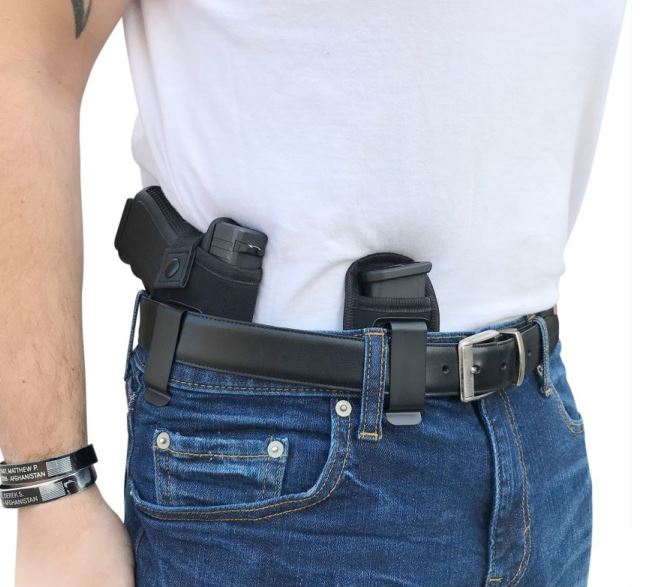 | 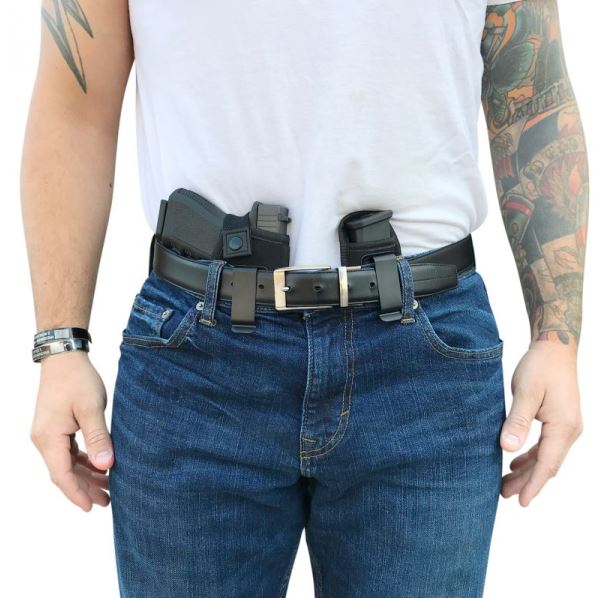 | 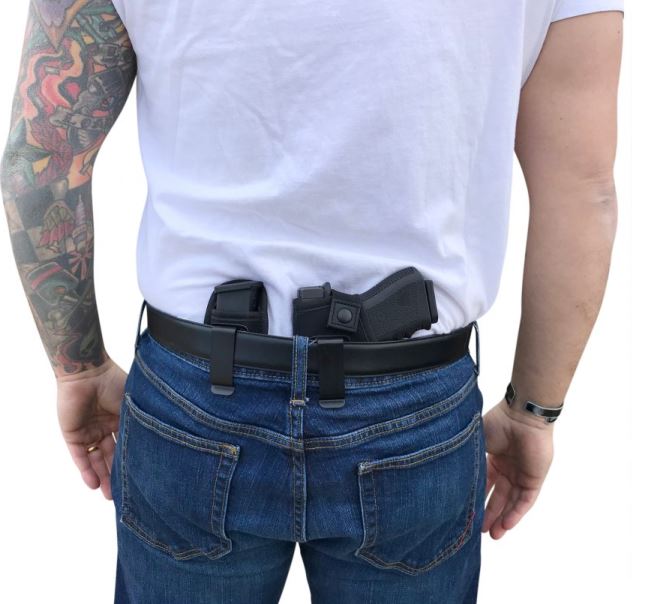 |
IMAGE PROVIDED BY TACTICON.COM
Hip Carry - Also called the 3 O'clock position is when you carry your weapon on the hip.
It give you quick accessibility to your weapon as your arms are in a natural position right on your hip. However, printing can be a problem with larger guns.
Appendix Carry - Easily becoming one of the most popular conceal carry positions.
It gives you quick access to you weapon as the gun is tuck away in the front abdomen area near the kidney, but it may decrease comfort from your gun and holster digging into your body.
Printing can also be a problem with larger guns.
Back Carry - Small of the back is the easiest carry position to conceal you gun.
Your gun is tucked away in the small of your back, which makes covering the gun easy and printing is minimal, as one's pistol lays more or less flat across the back, although a bit of printing will occur when your seating down.
Accessibility to your weapon will be more difficult since you have to reach around to your back to draw your gun.
Holster Design
As we've mentioned before not all holsters are made equally.
Each one of the holster materials will most likely come with a different holster design, which can have an impact on comfort, concealment, retention, and accessibility.
Adjustability
Not all holsters are made to be adjustable. For instance, leather holster is molded into one shape, so you get what you get regardless of the outcome.
Adjusting Cant, Ride Height, and Retention
If the cant angle or ride height isn't right, you won't be able to adjust it. Typically, leather, nylon, and neoprene holsters will have little to not adjustability.
Kydex holsters on the other hand, will typically allow you to adjust your cant, retention, and ride height. These features of a holster can improve comfort, concealment, retention, and accessibility.
To learn more about adjusting your holsters check out How to Adjust Cant, Retention, and Ride Height Guide.
Adding a Holster Claw (Wing) and or Wedge
Adding a Holster Claw and or Wedge can help adjust your holsters position inside of your waistband to improve comfort and reduce printing for better concealment.
Optics, Lasers, or Lights
If you prefer to carry a gun with an optic, laser, or light, unfortunately, not all holsters are made to accommodate gun attachments.
Conceal carry holsters that are compatible with gun attachments will need to be custom made.
Typically Kydex holster are the most ideal for attachments since they are molded around the shape of your gun.
Although, attachments may sound great and all, they will add additional weight and size to your conceal carry holster, which can have an impact on comfort and concealment.
Final Thoughts
Comfort is by the most important factor to consider when buying a concealed carry holster.
Many people have found that holster material, carry method, draw position, and adjustability are the 4 most important factors to considers when they were buying their concealed carry holster.

